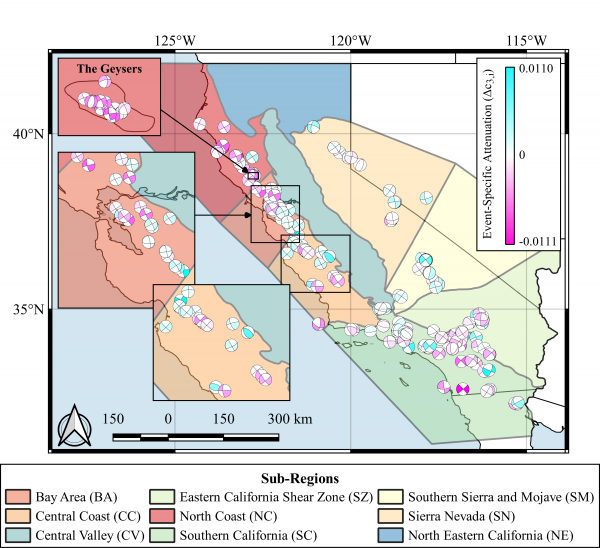Subregional anelastic path effects in California
Tristan Buckreis
UCLA

- Date & Time
- Location
- Online-only seminar via Microsoft Teams
- Host
- Grace Parker
- Summary
Next Generation Attenuation (NGA) West2 ground motion models (GMMs) include regional path adjustments for broad geopolitical regions. We extend that framework to account for systematic variations in anelastic attenuation for nine physiographical subregions in California that are defined in consideration of geological conditions. Using a large database that is approximately doubled in size for California relative to NGA-West2, we find relatively fast attenuation in coast range areas (North Coast, Bay Area, Central Coast), relatively slow attenuation in eastern California (Sierra Nevada, Eastern California Shear Zone), and state-average attenuation elsewhere, including southern California. As part of these analyses, we find for the North Coast region relatively weak ground motions on average from induced events (from the Geysers), similar attenuation rates for induced and tectonic events, and higher levels of ground motion dispersion than other portions of the state. The proposed subregional path model appreciably reduces within-event and single-station variability relative to the Boore et al. (2014) GMM model for ground motions at large distance (RJB > 100 km). The approach presented here can readily be adapted for other GMMs and regions.
Closed captions are typically available a few days after the seminar. To turn them on, press the ‘CC’ button on the video player. For older seminars that don’t have closed captions, please email us, and we will do our best to accommodate your request.
 Jump to Navigation
Jump to Navigation